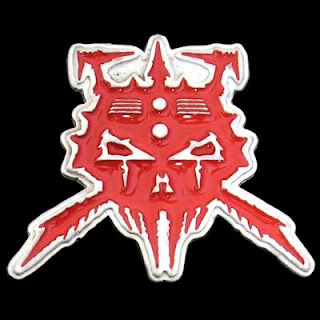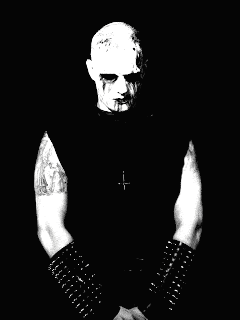But I digress – I myself have been guilty of some form of musical elitism over the years, though markedly less blatant or purposeful. Most of my guilt comes from occasionally slagging on a band or album for mixing musical styles together that either don’t make sense, or usually for bands that try to do something along those lines but just fail miserably because they don’t have enough musical know-how to pull it off. I don’t see this as a bad thing, since a band should have more than a working knowledge of the styles they’re trying to marry before trying to sell their recorded works to the public. In the grand scheme of things, this is a relatively small issue, compared with the more widespread genre elitism that takes place in the rock and metal world daily.
With that in mind, I have considered the idea of a “Musical RetCon”. In effect, this would look at a modern style of music and then turn back the clock 20 years to see if the responses to this genre or style would be the same. Not that we can accurately determine that now; that’s simply not the point. Rather, I just posit the idea that if said style had originated alongside some of the more revered styles, would they have been accepted in their infancy just as their parent styles were, or would they have been as reviled then as they are (by elitists) today? I submit before the court the question of metalcore and deathcore – would those styles have been as widely panned by metal purists had they been introduced during the height of thrash metal, the initial stages of death metal, and ultimately the first embers of what became black metal?Firstly, let’s start with a couple definitions, just to clear the air. Personally, I see metalcore as a melding of hardcore music (in a more modern form versus early hardcore like Minor Threat or early Agnostic Front) and heavier forms of music like thrash and death metal. While the conventions of thrash and death metal are nearly always eschewed for a hardcore aesthetic, the music is generally heavier than hardcore music, resulting in something that retains a hardcore basis but is heavy enough to be considered metal music. Likewise, deathcore is an extension of the metalcore sub-genre, itself taking on the characteristics of metalcore but leaning further in the direction of death metal with greater emphasis on downtuned guitars, guttural vocals, and overall “brutality” in the sound. Just to make sure my own personal feelings aren’t on trial here, I have opted to link to the Wikipedia articles on both styles to ensure that their origins are understood.
Knowing that, based on these definitions, there is a healthy amount of metal influence in these sub-genres, it would seem on the surface that metalcore and deathcore would be welcomed into the metal fold with open arms. That would be all too easy, however, as the so-called “metal elite” is often far too self-absorbed for that kind of open-ended thinking. For a genre that rages against conformity and praises individualism, metal is often victim to its own set of arbitrary rules and regulations, with websites like Metal Archives (aka Encyclopaedia Metallum) leading the charge for metal conformity and uniformity. When did heavy metal become a genre of rules and regulations? When did the style of music that was supposed to shake the foundations of the world become old news and succumb to the weight of its own self-imposed law? I thought metal WAS law?So while I say some of this in jest, sarcastic tongue planted firmly in cheek, it isn’t without some frustration that I call for this move toward sanity. Metalcore and deathcore may both be trendy right now, but consider how long these styles have already been in play. Metalcore has been around in some form since the mid-1990’s when bands like Earth Crisis and Living Sacrifice started blending hardcore elements together with crushing metal sounds. And to me, the roots of deathcore stretch back more than 10 years with some of the more modern death metal bands at the time (like Embodyment, with their “Embrace the Eternal” album) beginning to incorporate elements that drove some of the deathcore sound, regardless of the presence or absence of hardcore-styled breakdowns.
Let’s look at another example closer to home. Thrash metal started in the early 80’s and didn’t truly catch on outside the underground until the mid-late 80’s when Metallica, Megadeth, Anthrax, Slayer, Testament, Exodus, Overkill, etc. started to gain major fan-bases by touring and releasing solid albums. So while the roots of the style can be traced back to late 70’s and early 80’s British metal and punk (Motorhead, anyone?), it took a few years before the style started to gain favor in the metal community. By the late 1980’s, thrash bands from the San Francisco “bay area” were popping up left and right, with even more aggressive bands cropping up in Europe (i.e. Destruction & Kreator) and abroad. From 1988 to about 1991, before the grunge explosion, one might have said thrash metal became trendy. One might even say thrash has become trendy once again, with a lot of retro-thrash metal bands popping up, old bands re-uniting and making great records (Testament comes to mind with their latest album), and a lot of young, hungry metal bands making classically-styled thrash records that sound as if Overkill or Exodus were channeling their 1980’s output into a new generation with better production values.We are NOT the babysitting service!
By the same token, death metal became “trendy” in the mid-late 1990’s when metal was in a more underground state, with tons of death metal bands popping up and emulating early output by Death, Morbid Angel, Bolt Thrower, Deicide and Cannibal Corpse. Some bands did their own unique things (like Atheist, Pestilence or Gorguts), while some bands opted for a straight ahead, no-frills approach. Likewise, black metal has in some way become trendy or fashionable. Indeed, when college-age guys dressing like hipsters are playing (often quite well) their own take on the black metal aesthetic, it’s obvious that it’s not just a bunch of guys wearing corpse paint and burning churches any longer. The gig is up, and while the large number of “bedroom black metal” bands won’t overtake Immortal any time soon, the age of “true” black metal which is all about Satanism (in whichever form you prefer) is pretty well over. This brings to mind the subject of “the music is the message, the message is the music” which I also disagree with, though I will tackle that subject at another time.
For the uninitiated, the term ‘RetCon’ is short for “Retroactive Continuity”. In terms of television, movies, books, comics, etc. it is the practice by some writers or Intellectual Property holders to retroactively add storylines or modify things that happen either prior to or during an established timeline for that particular medium. For example, a movie trilogy is established, then perhaps a later work of fiction or TV series related to that movie may retroactively insert details into the original trilogy storyline that were not present in the original medium. It is a literary device used often to make what is happening now (in the current storyline) relevant or connected to the prior or existing story or events.





No comments:
Post a Comment